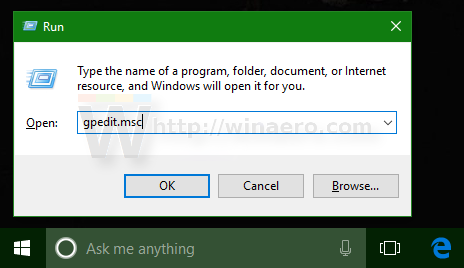Offline Files is a special feature of Windows that allows you to access files stored on a network share locally, even when you are not connected to that network. By default, the OS limits the local disk space that offline files take to 25% of the system drive. The limit includes the local disk space used by cached files that were made available offline, and automatically cached files which were accessed by the user on a network share. Here is how to change this.
Advertisеment
By default, Windows store Offline files for all users on the computer under the folder C:\Windows\CSC. It is a protected system folder. The disk space limit defines the size and number of offline files stored on your computer.
Windows deletes automatically cached files from the Offline Files cache on a least-recently used basis if the maximum cache size is reached. Files that were manually set as always available offline are never removed from the cache. To remove such files from the cache, you need to disable always offline mode for some of your network files, or remove the cache contents manually using the Sync Center in the classic Control Panel.
To change the Offline Files Disk Usage limit in Windows 10, do the following.
- Open the classic Control Panel app.
- Switch its view to either "Large icons" or "Small icons" as shown below.
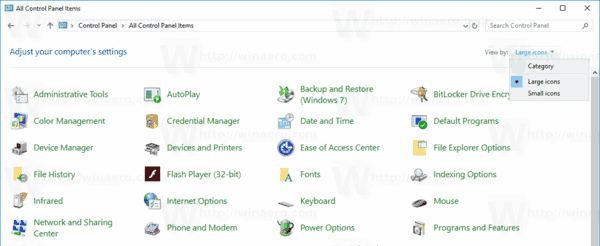
- Find the Sync Center icon.

- Open Sync Center and click on the link Manage offline files on the left.
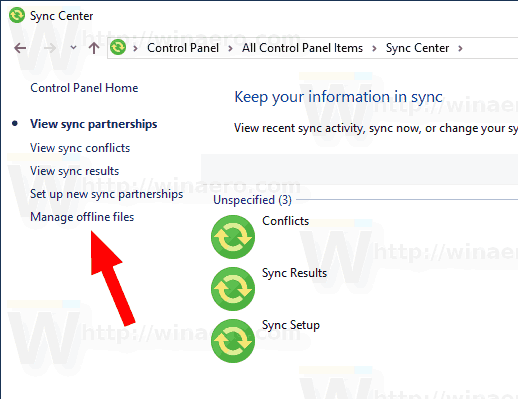
- In the next dialog, switch to the Disk usage tab. There, you'll see the current size of the offline files cache.
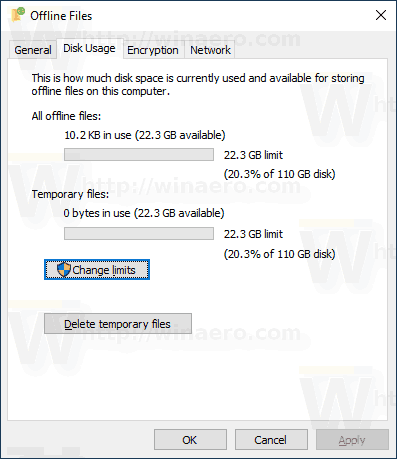
- Click on the Change limits button to change the disk space limit for offline files.
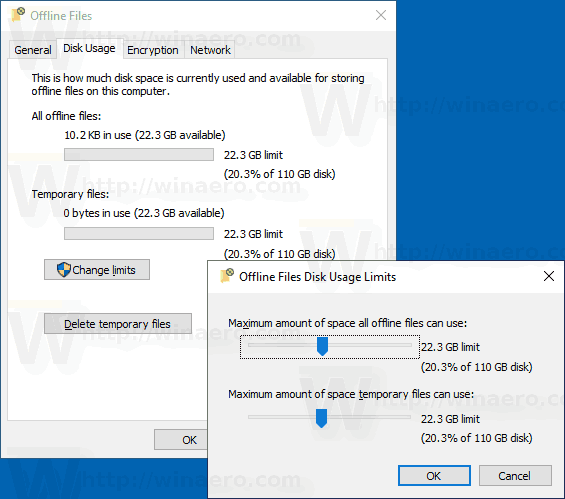
Alternatively, you can use Group Policy to force a specific disk space limit for all users. Here is how it can be done.
Change Offline Files Disk Usage Limit with Group Policy
- Open Registry Editor.
- Go to the following Registry key:
HKEY_LOCAL_MACHINE\SOFTWARE\Policies\Microsoft\Windows\NetCache
Tip: See how to jump to the desired Registry key with one click.
If you do not have such a key, then just create it.
- Here, modify or create a new 32-bit DWORD value CacheQuotaLimit. Note: Even if you are running 64-bit Windows, you still need to use a 32-bit DWORD as the value type.
- Enter in decimals the value data for how many Megabytes you want for total size of offline files (always offline files+temporary files).
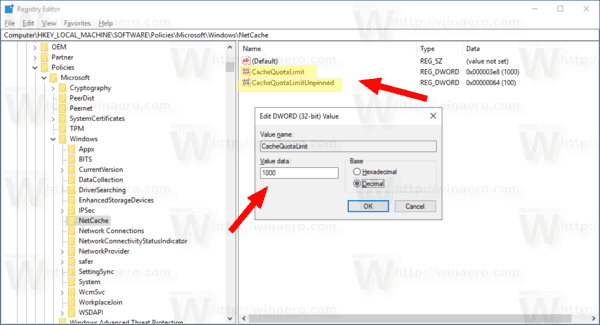
- Modify or create a new 32-bit value CacheQuotaLimitUnpinned to specify the limit in Megabytes for automatically cached files (temporary files).
- Restart Windows 10 to apply the changes.
Later, you can delete the CacheQuotaLimitUnpinned and CacheQuotaLimit values to restores the default options.
Using the Local Group Policy Editor app
If you are running Windows 10 Pro, Enterprise, or Education edition, you can use the Local Group Policy Editor app to configure the options mentioned above with a GUI.
- Press Win + R keys together on your keyboard and type:
gpedit.msc
- Group Policy Editor will open. Computer Configuration\Administrative Templates\Network\Offline Files.
- Enable the policy option Limit disk space used by Offline Files.
- Under Value entered is in Megabytes, configure the desired limits.
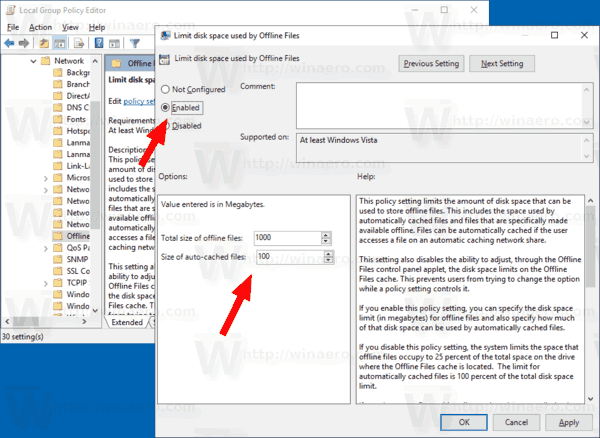
- Restart Windows 10.
Related articles:
- Manually Sync Offline Files in Windows 10
- Enable Offline Files in Windows 10
- Enable Always Offline Mode for Files in Windows 10
- Create Offline Files Folder Shortcut in Windows 10
- Change Offline Files Sync Schedule in Windows 10
Support us
Winaero greatly relies on your support. You can help the site keep bringing you interesting and useful content and software by using these options:
